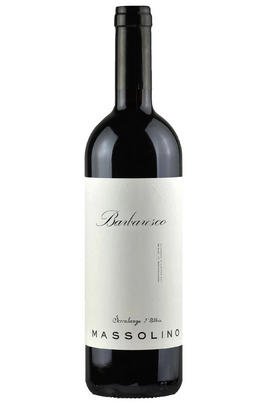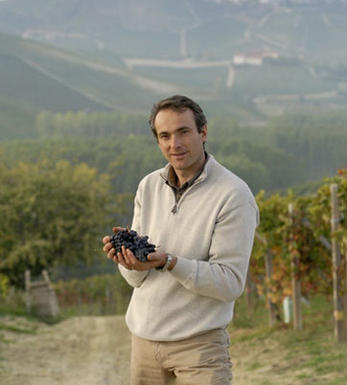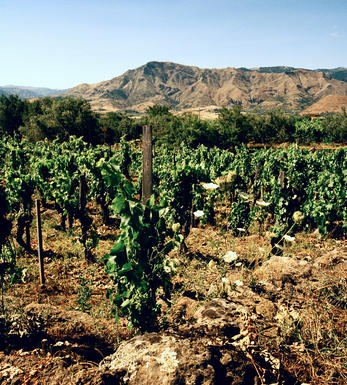
2020 Barbaresco, Massolino, Piedmont, Italy

Critics reviews
The 2020 Barbaresco is a terrific follow up to the 2019. A wine of nerve and grace, the 2020 sizzles with energy. Finely sculpted red/purplish fruit, lavender, spice, crushed rocks and orange zest all grace this super-expressive, mid-weight Barbaresco. An explosion of sweet floral and spice notes lifts the gorgeous, beautifully perfumed, vibrant finish. I love the classicism here.
Massolino presented a glorious set of new releases, one of the finest ranges I can recall tasting in more than twenty years of visiting the estate. The 2020 Barbarescos build on last year’s wines. Both are exquisite. After a challenging 2018, Massolino bounces back with a set of 2019 Barolos, wines that impress with their purity and profound expressions of site.
Last but certainly not least is the majestic 2017 Barolo Riserva Vigna Rionda, a wine that will soon take its place as one of the very finest Barolos ever made here. “It was a warm year, but the heat was well-distributed, with most of it taking place in June and July rather than in the fall when the vines are more vulnerable,” Franco Massolino explained. “We had healthy rains after those summer spikes, and the weather settled into a much more typical pattern. Our harvest started in mid-October.” The Massolino wines are notable for a style that blends old-school classicism with contemporary polish.
Drink 2025 - 2040
Antonio Galloni, Vinous.com (January 2023)
Neive. Lustrous mid-ruby. Quite closed on the nose with just a suggestion of dark spice and ripe cherry and just a hint of Band-Aid. Supple, elegant and with minerally notes and bags of chewy tannins. Cool-climate style.
Drink 2023 - 2028
Walter Speller, JancisRobinson.com (July 2023)
The Massolino 2020 Barbaresco is slightly closed at this young stage and needs a little more time in bottle. You do get soft cherry and wild cassis with crushed stone and blue flower. It just needs more time to come together. Production is an ample 20,000 bottles.
Drink 2024 - 2035
Monica Larner, Wine Advocate (August 2023)
A fragrant nose with spiced cherries, dried strawberry bush, chocolate and dark spices. Hints of bark, too. Medium-bodied with savoury character and firm tannin structure. Balanced and even with a velvety finish.
Drink after 2025
James Suckling, JamesSuckling.com (July 2023)
About this WINE

Massolino
Based in the heart of the village of Serralunga, Massolino is a historical estate now managed by Franco Massolino. The estate was established in 1896 by Franco’s great-grandfather, and its running has been deeply interwoven throughout different generations. Charming and open yet reflective, Franco combines a willingness to challenge assumptions with a deeply-felt sense of responsibility to his family legacy. This legacy, in his view, is to faithfully represent the wines and unique heritage of the region. To give the purest expression of the grape, vinification is traditional, with fermentation and maceration for around 21 days in temperature-controlled, open oak fermenters called tini. The wine is the aged in large Slovenian oak botti – no oak toast, just steamed – for up to 30 months before being left to mature in bottle.
Franco Massolino feels that 2019 is a more traditional vintage: one with complexity, powerful tannins, lovely purity, and one capable of great longevity. He is not concerned about the level of the tannins, feeling that they are “smooth” and “like china”. He observes that even with excellent ripeness analysis, a late harvest always gives more tannic power. Franco is not a commentator drawn to hyperbole; his communication is measured and thoughtful. But, a twinkle in his eye betrays that this is a style of vintage that appeals to him very much.

Barbaresco
The Piedmontese DOCG zone of Barbaresco is responsible for producing some of Italy’s finest wines. It occupies the same region and uses the same grape (Nebbiolo) as its bigger brother Barolo, but is a third of the size (only 640 hectares versus Barolo’s 1,700 hectares). It is also 50 years younger than Barolo, having produced wine labelled Barbaresco since 1890.
Barbaresco earned its DOCG after Barolo in 1980, largely thanks to the efforts of Angelo Gaja. The soils are lighter here than in Barolo – both in colour and weight – and more calcareous. The slopes are also less favourably situated and (relatively speaking) yield earlier-maturing yet extremely elegant wines that require less oak ageing (normally one year in oak plus six months in bottle). The appellation’s key districts are Barbaresco, Treiso, Neive and Alba.
Recommended producers: Cigliuti, Gaja, Marchesi di Gresy

Nebbiolo
Nebbiolo is the grape behind the Barolo and Barbaresco wines and is hardly ever seen outside the confines of Piedmont. It takes its name from "nebbia" which is Italian for fog, a frequent phenomenon in the region.
A notoriously pernickety grape, it requires sheltered south-facing sites and performs best on the well-drained calcareous marls to the north and south of Alba in the DOCG zones of Barbaresco and Barolo.
Langhe Nebbiolo is effectively the ‘second wine’ of Piedmont’s great Barolo & Barbarescos. This DOC is the only way Langhe producers can declassify their Barolo or Barbaresco fruit or wines to make an early-drinking style. Unlike Nebbiolo d’Alba, Langhe Nebbiolo can be cut with 15% other red indigenous varieties, such as Barbera or Dolcetto.
Nebbiolo flowers early and ripens late, so a long hang time, producing high levels of sugar, acidity and tannins; the challenge being to harvest the fruit with these three elements ripe and in balance. The best Barolos and Barbarescos are perfumed with aromas of tar, rose, mint, chocolate, liquorice and truffles. They age brilliantly and the very best need ten years to show at their best.


Buying options
Add to wishlist
Description
Massolino’s 2020 Barbaresco is a blend of all three Barbaresco crus and made similar to their Barolo, with very delicate vinification and attention to detail. While the 2019 vintage was more tannic and tense, the 2020 has an ethereal restraint and is slightly more approachable. For fourth-generation winemaker Franco Massolino, this is only his second vintage but his preferred style. The nose is spectacular, brimming with fresh red fruits and sweet perfume, and the palate is well-balanced with charming berry fruits, fresh acidity and crushed velvet tannins. This is a classic and expressive Barbaresco to cherish.
Drink 2026 - 2040
Katie Merry, Assistant Buyer, Berry Bros. & Rudd
wine at a glance
Delivery and quality guarantee